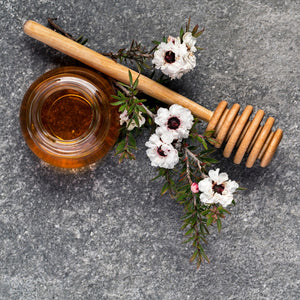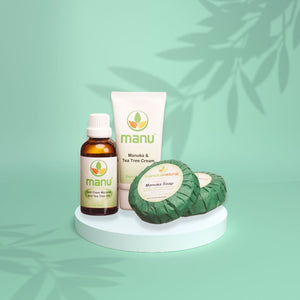
Eliminating Hair Fungus
Find out if hair fungus is your problem, and eliminate it!
Don't you hate when it shows up?
It's by no means pleasant, but above all, there's no need to be ashamed of having fungus in your hair. Like many out there, it is a health attacker, and you need to find the right therapy.
Hair fungus originates from the skin or scalp, not from the hair. The situation is common in children, younger people and also occurs in adults, who can also be affected.
Like a Ringworm, which is an infection of the scalp caused by fungi known as dermatophytes. The condition is also called tinea capitis.
One more fungus also likes to appear. Trichophyton terrestre! But we cannot omit the one that often affects kids - seborrheic dermatitis.
Hair fungus can be very persistent and last for months or even years. It affects more people than the data shows because people have ebbs and flows with their battle with fungus.
It can be contagious, which means an infected person can spread it to others through contaminated objects (say combs) or direct contact.
There are several ways to treat hair fungus; the first and basic step is good hygiene. You will notice over time if you have not mastered the technique of washing your hair well, as well as rinsing.
On the other hand, maybe you have not used suitable natural shampoos that kill bacteria and provide adequate scalp care.
However, it seems that shampoo alternatives are fighting symptoms rather than causes.
Fungus in hair causes
Fungi in the hair grow faster in damp and wet areas, so the leading cause is poor hair hygiene, skin injury, or frequent sweating. The infection can also be transmitted through contaminated hairbrushes, combs, and other head items such as hats.
The problem even might be worse if you have fun-colored hair.
The most common causes are:
- Sharing razors for head shaving
- Sharing combs, towels, and hairbrushes with infected persons
- Your hair is wet for a long time. Fungi thrive best in moist conditions
- Head injuries
Hair fungus will show symptoms such as round and damaged areas of the scalp. Damage can be present only on one part or side of the head or even spread over the entire body.
Affected areas usually look inflamed and red, often showing some signs of baldness. In some cases, tiny black dots can be seen on the skin. In some places, it can cause small particles on the skin, which appear as dandruff or seborrhea on the hair.
Some people may feel a slight itch on the scalp or, in some cases, a constant and persistent itch, while in others, the irritation will not appear.
Then there are skin flakes. Those could be fun, like riding a donkey on a steep rocky road.
Other more severe symptoms include permanent scarring of the scalp and hair loss.
The appearance of the scalp primarily determines the diagnosis of the condition. A biopsy of a piece of the skin observed through a microscope will show the presence of dermatophytes.
Other symptoms:
- Round stamps on the skin
- Constant itching.
- Brittle and weak hair, which is usually shorter than the rest of the hair
- Spots that may be red in severe cases
- Yellow crust/flakes in the hair
Hair fungus treatment
Primarily, good hygiene will help you reduce any fungus or maybe yeast infections.
Topical treatments used in the right amounts are the best way to eliminate hair fungus effectively. Hair products should also contain iodine, as well as wheat anti-germ/anti-fungus essential oil.
It is important to note that local treatment by itself is not always considered sufficient, but again, everything depends on the skin's condition.
During the treatment, the most important thing is not to scratch in order to prevent the appearance of ulcers on the head. In the meantime, you will need soft hair brushes to protect the skin from damage. Also, it would help if you don't share the hair accessory and do not have hair-to-hair contact with other people.
Sometimes, when hair fungus is detected late, all family members must also be examined and treated to stop the problem. Severe forms of infection may require shaving the hair to treat the underlying skin gently.
Avoid sharing towels, combs, and brushes and ensure that all headgear and objects that come in contact with the hair are clean, thoroughly washed, and dried before use.
So, make it a habit to clean and wash all your items at least once a week.
Fungal infection of the natural scalp treatment (Manuka oil for hair fungus)
Despite different antifungals, hospitals in France and around the world face therapeutic failures in treating invasive fungal infections.
We could explain these failures by limiting drug interactions in patients treated for different breeds, the severity of the infection, an antifungal concentration that is too low, or the patient's immune status. (1)
https://www.ncbi.nlm.nih.gov/pmc/articles/PMC6832927/#:~:text=Currently%2C%20the%20main%20essential%20oils,to%20be%20effective%20against%20fungi.
The problem seems more significant because fungi developed a mechanism of escape from therapy that involves an attack on their biofilms.
That is why many hospitals (although they wouldn't admit it) are using potent antifungal essential oils in medicine.
The essential oils of aromatic plants have long been used in embalming to prevent bacterial growth and avoid decay. This is a practice that Ancient Egyptians started first.
What about hair fungus?
In one study, manuka oil was investigated as a promising help to get rid of hair fungus, including above mentioned Trichophyton terrestre.
Trichophyton terrestre is a keratinophilic fungus (it means that attacks hairy areas in people and horn areas in animals).
Manuka oil has a range of mechanisms of action that inhibits microorganisms. Hydrophobicity is particularly important. It causes the lipid bilayer to detach from the cell membrane, thereby contaminating entire cell contents. In other words, manuka oil's strength melts the biofilm of microorganisms.
Manuka oil and other essential oils may also destroy more of the bacteria's vital enzyme systems. (2)
https://www.academia.edu/70756103/The_Anti_Trichophyton_Terrestre_Activity_of_the_Essential_Oil_of_Leptospermum_Scoparium_Manuka_Oil_
This study's results very quickly showed the efficacy of manuka oil even when the oil is diluted at 0,25% in ratio with carrier oil or water.
The antifungal activity of manuka oil in this study showed its potency against Trichophyton terrestre dermatophytes, but this may apply to fungi of all kinds.
In the end...
Annoying? Yes! But it's manageable. You should only know the way.
You can use manuka oil directly on the region or add it to your shampoo.
Which shampoo? One highly effective hair wash I've seen helps is using a combo of manuka oil & ketoconazole wash (Nizoral shampoo).
When you wash your hair, put a good amount of the shampoo on, rub it gently into your scalp, and let it sit for at least five minutes, then rinse.
Manuka oil for hair fungus is also great because it restores the pH balance and keeps flair-ups at bay.
However, you should keep in mind that things like hair fungus show up when your immune system is unstable.
So, along with applying manuka oil for hair fungus, you should also work on strengthening your immune system. But, again, natural ingredients are the best way. If you like, you can start with a spoonful of Manuka honey UMF.
But first, you should get it checked out professionally so that at least you know what you're dealing with.



Leave a comment